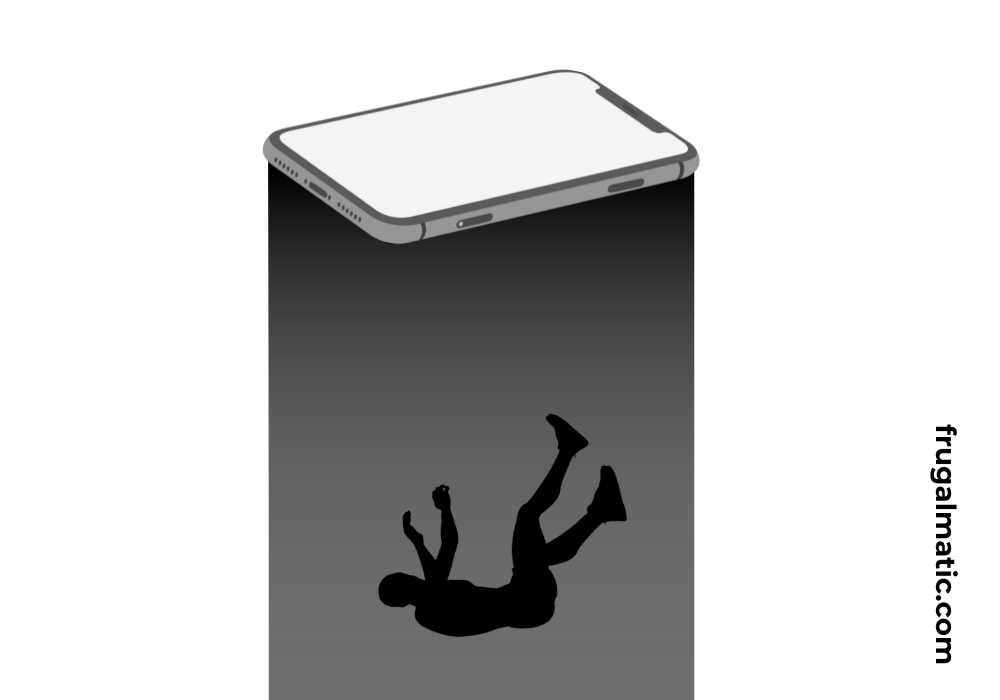This post was last updated on September 30th, 2023 at 10:05 am
Many people argue technology is neither good nor bad. It all depends how you use it, they say. That’s true, in some cases. But sometimes technology doesn’t give us much of a choice. In this digital age, some technology is “programmed” to influence our behavior, often in unhealthy ways. It’s important to be selective about which gadgets or devices enter your life. Here are five questions to consider whether the technology in your life is “healthy tech.”
Question #1: Does the technology create a convenience likely to reduce your physical activity levels?
I recently saw a TV ad for a robotic vacuum featuring a family happily strolling through a farmer’s market while their new robotic vacuum cleaned their floors back home. The message was simple: By buying this robotic vacuum, you’ll be able to spend more time being physically active doing the things you love. But the truth is likely the opposite for many of us. Many of us would be on the couch watching TV or scrolling on phones while our robotic vacuum did its thing. Whenever technology offers to remove a physical task from your life, be suspicious. Ask yourself whether you’re likely to replace that activity with something else just as active.
To be clear, technology can be used to promote an active lifestyle. Here’s one example of healthy tech: the battery-powered lawn mower. I wrote a review about our mower (an EGO), and I’m a big fan because these mowers make mowing easier without eliminating the physical activity itself. If you hate mowing because of the smells and noise created by gas-powered engines, you might find battery-powered mowers much more pleasant to operate. Battery-powered motors make this physical activity more appealing, not less, in my opinion.
I would also make a similar, “healthy tech” endorsement for e-bikes. Granted, an e-bike might reduce physical activity levels for some riders by making biking less strenuous. But for many riders, e-bikes likely create more opportunities for physical activity. An e-bike might make bike commuting possible for riders who would consider conventional biking too exhausting or too time consuming. In this case, the convenience offered by an e-bike actually would increase physical activity levels. (To consider whether biking to work makes sense for you, take a moment to calculate your frugalmatic ratio.)
Convenience tends to reduce physical activity levels, but it can boost levels in certain situations. Examine the potential effects before adding a new technology to your life. Will it encourage or discourage physical activity? Also, be honest as possible with yourself about the likely effects. You might tell yourself that you’ll go jogging while your robotic vacuum cleaner is zipping around your floors, but is that realistic?
Read: Sedentary tech of the future
Question #2: Is the technology required to sustain your livelihood?
No matter its effects on our health, certain technology is necessary to earn a living and pursue our careers. Desktop computers, which can leave workers sitting for hours on end, are instrumental for performing many white-collar jobs. Smartphones have also become necessities at many jobs, as some bosses demand 24-hour accessibility from their workers.
I’ve personally been blessed to never need a smartphone, though I’ve considered buying one several times over the years because of jobs. I continue to not own one for the simple reason that I’ve never needed one. Admittedly, not owning a smartphone has become a personal challenge of sorts, at least at this point in my life. I certainly don’t expect other people to take up this challenge. However, I will say this: If you don’t actually need a smartphone for your job, you have a great opportunity to trade your smartphone for a dumb phone that won’t suck up excessive amounts of your time.
Once you’re no longer tethered to a phone, you might be shocked to discover how much “new” time you appear to have. When your day doesn’t revolve around repeatedly checking a device, you can spend more of your time and energy doing more real-world things.
Question #3: Does the technology achieve a practical outcome?
By this question, I’m asking whether the technology is little more than a shiny new toy. Some new gadgets appear to offer life-changing features but are ultimately novelties. Once novelties wear off, you stop using them. Even technologies that promote health lifestyles, such as fitness trackers, often prove impractical. For many fitness tracker users, these devices eventually land in a kitchen drawer never to be worn again.
On the flip side, here is an example of a practical gadget: the electric toothbrush. Studies have shown an electric toothbrush removes more plaque than a manual brush. I don’t have proof that an electric toothbrush leads to fewer cavities or smaller dental bills, but I’d argue they’re worth using given what we know about their performance versus manual brushes. There’s no novelty factor with an electric toothbrush. Once you experience the benefits, you’re likely to continue to use it.
Whether a technology qualifies as practical or impractical depends on the individual. The important thing is to do the analysis, so you understand whether the tech in your life is truly useful.
To be clear, I’m not suggesting all technology in our life must have a practical purpose. I’m referring here only to technology that isn’t explicitly designed for entertainment purposes and is marketed as having a practical purpose. My next question will deal with entertainment.
Question #4: When seeking out entertainment, does the technology promote excessive consumption?
With this question, I’m asking whether the technology has been designed to hold your attention for an indefinite period of time. Live events—such as concerts, baseball games, and theater—are among the best forms of entertainment, in my opinion, because they last for a limited time period. You typically know how much time the live event will require in advance of consuming it.
Digital forms of entertainment become far more dangerous in terms of their potential to waste huge amounts of time and promote sedentary lifestyles. They’re like blank checks, except instead of giving these digital platforms your money, you are giving them your time (which they convert into profits).
Many digital platforms are also powered by algorithms that generate revenue for their owners by exposing their users to as many advertisements as possible. Essentially, these platforms turn users into full-time consumers. When using these digital platforms, do so with a high level of awareness, so that you’re in control of how much time you use digital media.
Digital platforms are infinite in nature with no true starting or ending point, which is why people sometimes describe them as “rabbit holes.” When possible, seek out finite forms of entertainment, ones with specific starting and ending points. This way, you’ll be entertained on your terms, instead of an algorithm’s terms.
Final question: Will the analog counterpart suffice?
If your tech doesn’t need to be tethered to the “internet of things,” go with the analog version when possible. A lot of gadgets and appliances these days are so-called smart technology. But smart tech sometimes serves little purpose other than to provide the manufacturer data about you. Even appliances, such as stoves and laundry machines, are now hooked to the internet. As you add these items to your life, the price is more than just your privacy. Keep in mind, “smart” technology often requires software updates. What happens when companies stop supporting the software that operates your “smart” device/appliance? You may be out of luck and need to buy a replacement.
The fact is, many analog technologies—from light switches to garage door openers—work perfectly fine without being tied to the internet. By tying technology to the internet, that’s just one more thing to go wrong, one more thing that you can’t easily repair. When buying appliances and other household items, avoid complexity. Practice the KISS method: keep it super simple.
No simple answers when seeking out healthy tech
While I try to keep my technology as simple as possible, the truth is there’s no simple answer to some of these questions. In this digital age, we often don’t have the luxury to say “no” to certain technologies, often because of digital gates. However, we can remain vigilant and aware about technology’s effects on our life. What we might consider to be our “duty” as good consumers can become a form of self-sabotage, as the latest and greatest tech undermines our ability to stay both physically and mentally fit.
To be sure, these five questions aren’t the only ones to consider when buying tech. But by asking them, you’ll become a more intentional and aware consumer. You’ll get more value from the stuff you own and, hopefully, these items will help lead you to a healthy lifestyle, instead of taking you off course.

